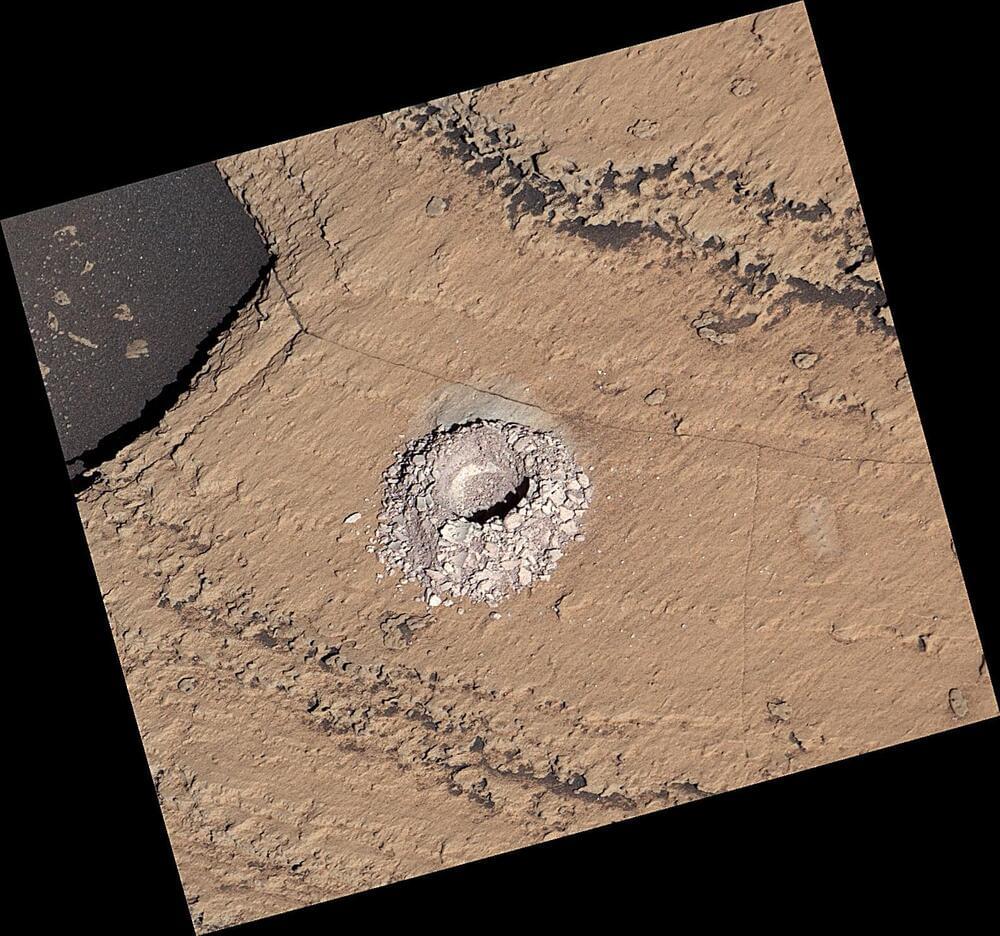A recent study published in the Journal of Geophysical Research: Planets examines the 39th drilling sample collected by NASA’s Curiosity rover on Mars from a rock named “Sequoia”, which comes shortly after the pioneering robot passed its 4,000th sol, or Martian day, exploring the Red Planet. This sample was found to contain starkeyite, which is a magnesium sulfate mineral analogous to extremely dry climates such as Mars and holds the potential to help researchers better understand the climate of the Red Planet, specifically pertaining to how it got so dry.
Image of the drill hole made by NASA’s Curiosity Mars rover collect a sample on Oct. 17, 2023, the 3,980th Martian day, or sol, of the mission. (Credit: NASA/JPL-Caltech/MSSS)
“The types of sulfate and carbonate minerals that Curiosity’s instruments have identified in the last year help us understand what Mars was like so long ago. We’ve been anticipating these results for decades, and now Sequoia will tell us even more,” said Dr. Ashwin Vasavada, who is a project scientist on the Curiosity mission at NASA’s Jet Propulsion Laboratory (NASA JPL) and one of almost three dozen co-authors on the study.










Comments are closed.